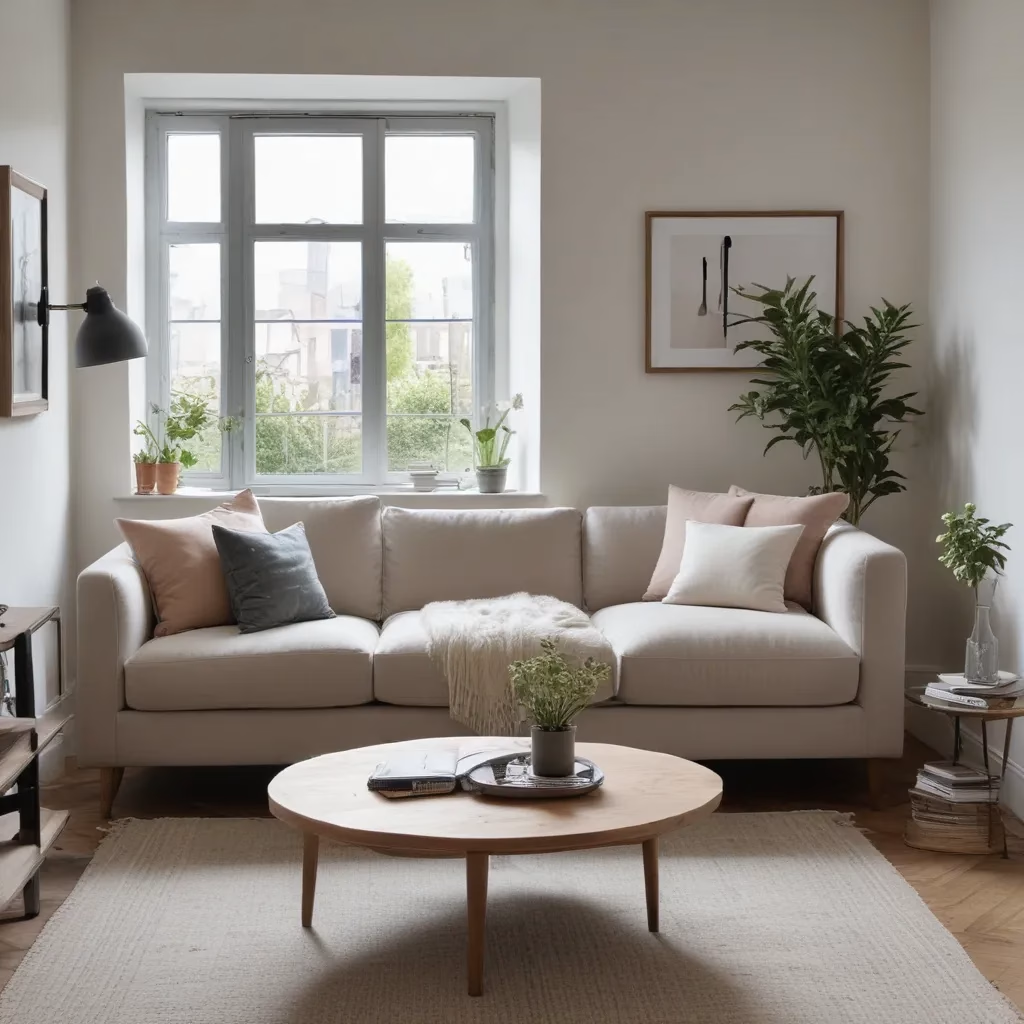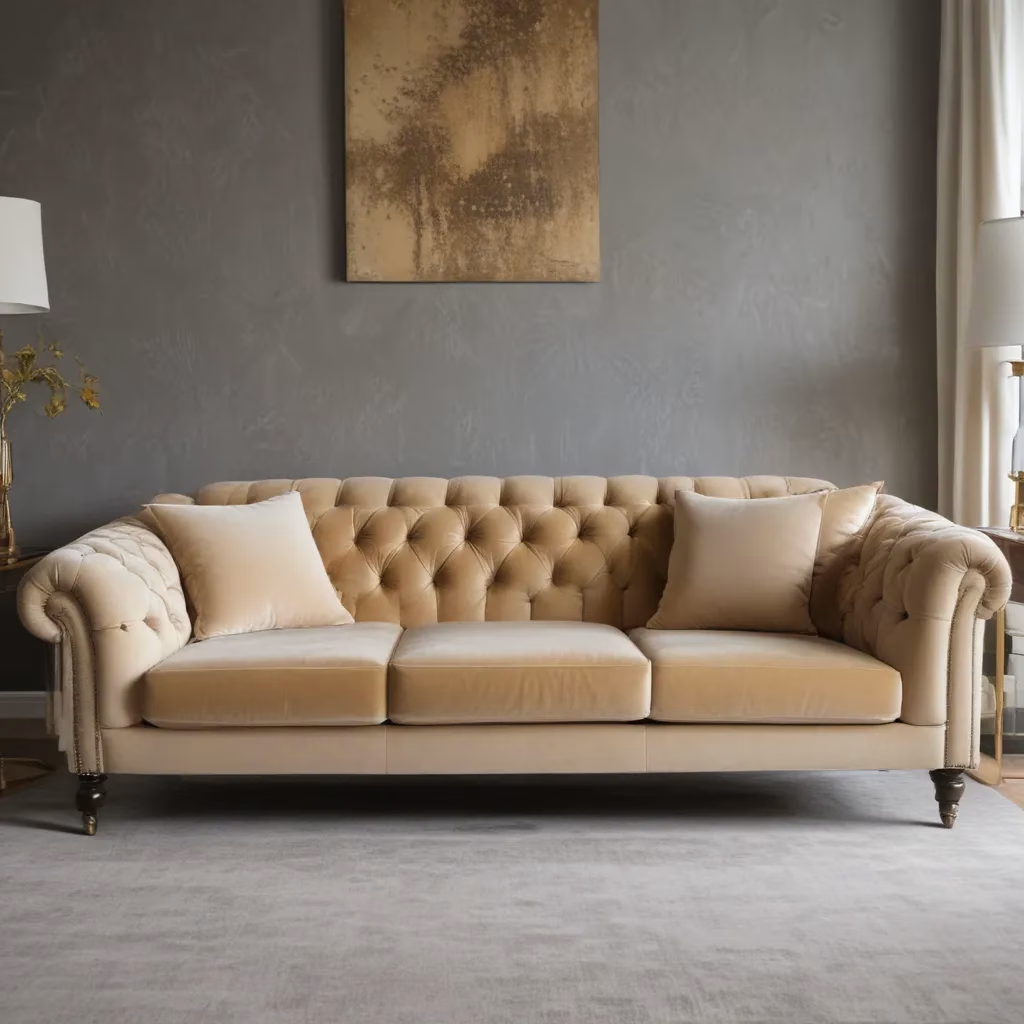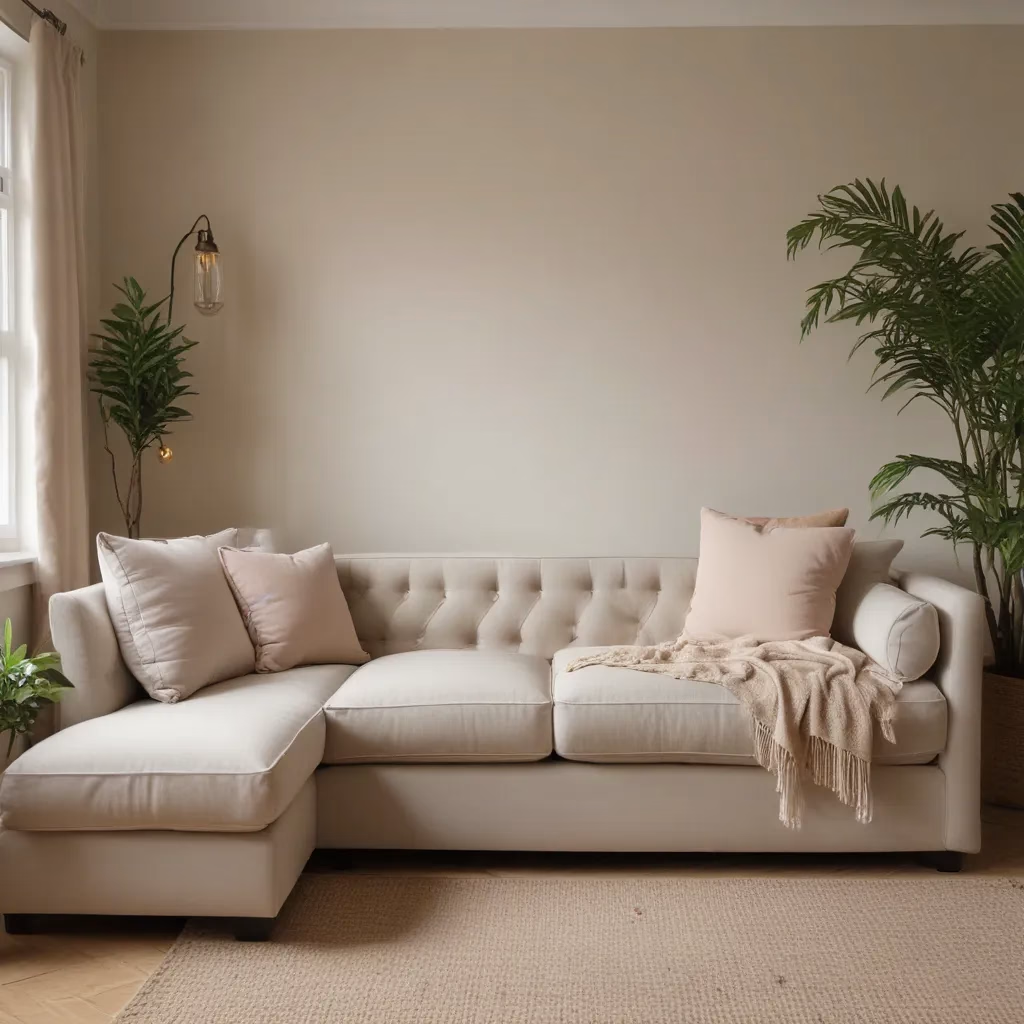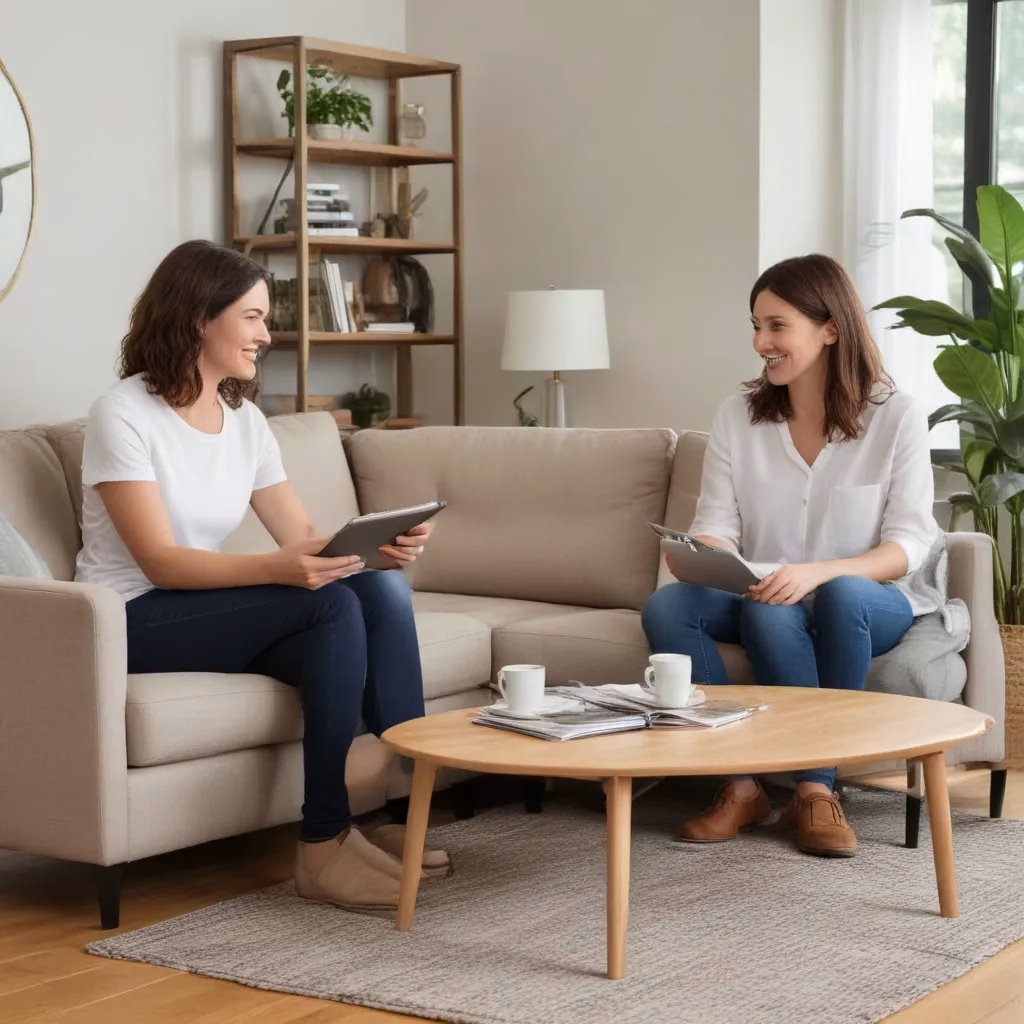
As an experienced furniture consultant and interior design writer, I’ve seen firsthand how the thoughtful arrangement of sofas can transform a small living space. In today’s world, many individuals and families find themselves needing to make the most of limited square footage, whether in apartments, condos, or compact homes. However, with the right strategies, even the tiniest of rooms can feel open, inviting, and visually expansive.
Now, this might seem counterintuitive…
Sofa Selection and Placement
The foundation of any well-designed small living room starts with the sofa. Choosing the right sofa for your space is crucial, as it will serve as the central piece that anchors the room’s decor. When it comes to sofa selection, there are a few key factors to consider.
Fabric and Upholstery Considerations
The fabric and upholstery of your sofa can have a significant impact on the overall aesthetic and functionality of the space. Opt for lightweight, durable fabrics that are easy to clean and maintain, such as performance fabrics or microfiber. These materials can withstand the rigors of daily use without looking worn or outdated.
When it comes to colour and pattern, lighter, neutral tones can create an airy, open feeling, while solid, monochromatic hues can help visually expand the room. Alternatively, subtle, tonal patterns can add visual interest without overwhelming the senses. The key is to choose upholstery that complements the room’s colour scheme and doesn’t compete with the other decor elements.
Living Room Layout Tips
Once you’ve selected the perfect sofa, it’s time to think about its placement within the room. Arranging the sofa in a way that maximizes the available space is crucial for making a small living room feel larger and more functional.
One effective strategy is to position the sofa against a wall or in a corner, freeing up the center of the room for easier movement and traffic flow. Alternatively, floating the sofa in the middle of the room can create a more intimate, conversation-friendly layout, while still leaving room for other seating options or a coffee table.
Remember to balance the scale and proportion of the sofa with the size of the room. Oversized or bulky sofas can quickly make a small space feel cramped, while a sofa that’s too small may appear lost and disconnected. Aim for a piece that fits the room’s dimensions comfortably, allowing for ample walking space around the perimeter.
Sofa Care and Maintenance
Maintaining the condition and longevity of your sofa is crucial, especially in a small living space where every piece of furniture plays a significant role. Proper care and upkeep can double-check that your sofa remains a beautiful and functional centerpiece for years to come.
Cleaning and Upkeep Strategies
Regularly cleaning and vacuuming your sofa can help prevent the buildup of dust, dirt, and debris, which can wear down the fabric and compromise its appearance. For spills or stains, act quickly and use the appropriate cleaning methods for the upholstery type to prevent permanent damage.
When it comes to deeper cleaning, refer to the manufacturer’s instructions or consult a professional upholstery cleaner to double-check that you’re using the right techniques and products for your sofa’s specific fabric and construction.
Extend Sofa Lifespan
To extend the life of your sofa, inspect it regularly for any signs of wear or damage, such as loose cushions, fraying seams, or squeaky mechanisms. Addressing these issues promptly can prevent further deterioration and help maintain the sofa’s structural integrity.
If your sofa does require more extensive repairs, consider reupholstering it rather than replacing the entire piece. This not only can save you money but also allows you to refresh the look and feel of your living room without having to find a new sofa that fits the space.
Styling and Decorating with Sofas
Beyond just functionality, sofas can serve as the foundation for creating a visually stunning and comfortable living space, even in the most compact of rooms. By thoughtfully accessorizing and integrating your sofa into the overall decor, you can elevate the look and feel of your small living room.
Enhancing Comfort and Relaxation
Sofas are, first and foremost, meant to be comfortable. Accessorize your sofa with plush throw pillows and cozy blankets to create a welcoming and inviting atmosphere. Consider the ergonomic features of your sofa, such as adjustable headrests or lumbar support, to double-check that maximum relaxation.
Layering lighting around your sofa can also contribute to a sense of warmth and coziness. Combine ambient lighting, such as floor lamps or wall sconces, with task lighting, like table lamps, to create a harmonious and soothing environment.
Integrating Sofas into Room Decor
When it comes to styling your small living room, consider the scale and proportions of your sofa in relation to the rest of the furnishings. Opt for pieces that are in harmony with the sofa’s size and shape, ensuring a balanced and cohesive look.
Experiment with complementary colour schemes and layered textures to add depth and visual interest to your space. For example, pairing your sofa with a plush area rug and some mid-century modern accent chairs can create a warm, inviting atmosphere.
Furniture Buying Guides
Navigating the world of sofa shopping can be a daunting task, especially when you’re working with limited square footage. However, with a few key considerations, you can find the perfect sofa that not only fits your space but also enhances your overall living experience.
Sofa Size and Dimensions
Before making any purchases, carefully measure your living room to determine the maximum dimensions your sofa can accommodate. Take into account the available floor space, as well as any architectural features that may impact the layout, such as doorways, windows, or fireplaces.
When selecting a sofa, consider the overall seating capacity you require, as well as the depth and height that will provide the most comfortable experience. Opt for a compact, streamlined design that doesn’t overwhelm the room.
Sofa Construction and Materials
The quality and construction of a sofa can greatly impact its durability and long-term performance. Look for a sturdy, well-built frame that can withstand daily use, as well as high-quality cushion fillings that will maintain their support and shape over time.
Additionally, investigate the upholstery materials used, ensuring they align with your lifestyle and needs. Durable, easy-to-clean fabrics are particularly well-suited for small living rooms, where spills and wear-and-tear are more common.
By considering these key factors, you can find a sofa that not only fits your space but also provides the comfort, style, and longevity you desire. Remember, with a little bit of planning and creativity, even the most compact living room can become a cozy, inviting oasis.
Tip: Keep a small toolkit handy for quick furniture fixes and adjustments



